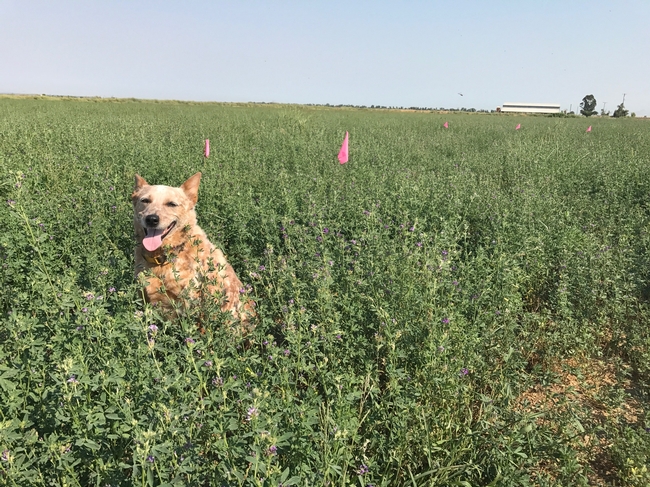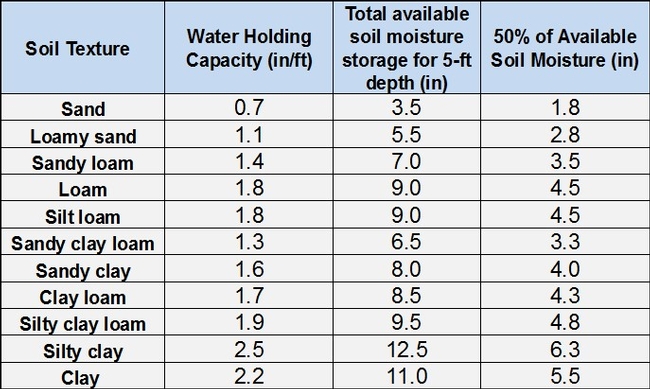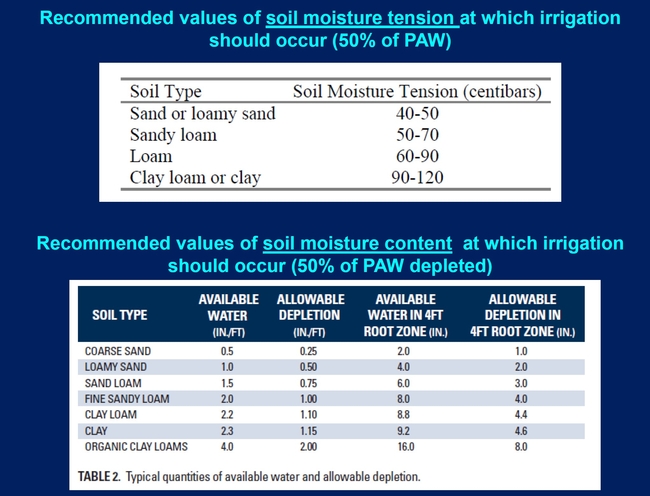Dog gone it's hot!
This is expected in our Central Valley at this time of year, but when heat waves hit, it's important to be prepared with good irrigation management practices in alfalfa hay production.
Can alfalfa tolerate extreme heat? The short answer is ‘yes'. Alfalfa is originally from the Middle Eastern regions of Turkey, Iran, and Central Asia, so it is well adapted to hot, dry conditions. It's also routinely grown in the hot deserts of Arizona, Southern California and Mexico.

Managing Water. It is especially important that the crop has access to water during hot periods. In the absence of water, the crop will dry down and go dormant. The tendency of alfalfa to shut down under high temperatures is a physiological response to both heat and water stress. It will generally recover with irrigation, but yields will be reduced. It's very common to fall behind during summer months. ‘Summer slump' results from high heat, and shorter days, in addition to water stress which slows down growth, and encourages flowering. See article on 'summer slump' - this blog.
This means that one has to manage water carefully for alfalfa during hot periods. Irrigation is one of the most important factors influencing alfalfa yield and quality. Frequency of crop irrigation depends on plant growth, root development, the water-holding capacity of the soil, and plant water use (evapotranspiration, ET). Well-watered alfalfa will have a dark green color, which will turn to a lighter bluish-green color as water stress develops, followed by early flowering, and under extreme stress, plant wilting.
ET and Soil Moisture. Monitor soil moisture carefully during hot periods with soil probes or soil monitors, up to a 4-5 ft depth, but 3-4 feet may be a common "effective" rooting depth for alfalfa. It's also important to know about the water demand, or Evapotranspiration (ETc) of the crop. Daily weather and ET estimates, along with soil moisture monitoring, are important for optimal water management in alfalfa. The seasonal ETc of fully irrigated alfalfa varies by location in California as follows (total inches): Imperial Valley 61-in, Central Valley 54-in, Scott Valley 35-in, and Tulelake 38-in. Managing water in alfalfa requires proper irrigation scheduling, that is, determining when and how much to irrigate, and good irrigation system management to deliver the desired amount of water efficiently and uniformly.
Being familiar with the ET (inches per day) of alfalfa and monitoring soil moisture over the season is important to ensure adequate water is being applied for the crop. The following table shows the historical alfalfa crop evapotranspiration (inches per day) for different areas in California. These numbers are based on averaged daily temperatures; in advance of a heat wave, it is important to ensure adequate water is applied to the crop, particularly in the summer months when water use is highest.
Historical alfalfa crop evapotranspiration, ET (inches per day), Hansen et al. 2007.
|
Date |
|
Shafter |
|
Five Points |
|
Parlier |
|
Davis |
|
Nicolaus |
|
Durham |
|
McArthur |
|
Brawley |
|
Jan 1-15 |
|
0.03 |
|
0.04 |
|
0.03 |
|
0.03 |
|
0.03 |
|
0.03 |
|
0.02 |
|
0.07 |
|
16-31 |
|
0.05 |
|
0.05 |
|
0.04 |
|
0.05 |
|
0.04 |
|
0.05 |
|
0.03 |
|
0.09 |
|
Feb 1-15 |
|
0.07 |
|
0.06 |
|
0.06 |
|
0.06 |
|
0.06 |
|
0.06 |
|
0.04 |
|
0.1 |
|
16-28 |
|
0.09 |
|
0.09 |
|
0.08 |
|
0.09 |
|
0.09 |
|
0.09 |
|
0.07 |
|
0.13 |
|
Mar 1-15 |
|
0.11 |
|
0.11 |
|
0.1 |
|
0.09 |
|
0.09 |
|
0.09 |
|
0.08 |
|
0.16 |
|
16-31 |
|
0.14 |
|
0.15 |
|
0.13 |
|
0.14 |
|
0.12 |
|
0.12 |
|
0.11 |
|
0.19 |
|
Apr 1-15 |
|
0.19 |
|
0.2 |
|
0.17 |
|
0.18 |
|
0.15 |
|
0.16 |
|
0.14 |
|
0.22 |
|
16-30 |
|
0.2 |
|
0.22 |
|
0.19 |
|
0.2 |
|
0.18 |
|
0.17 |
|
0.14 |
|
0.25 |
|
May 1-15 |
|
0.24 |
|
0.26 |
|
0.22 |
|
0.23 |
|
0.21 |
|
0.21 |
|
0.18 |
|
0.28 |
|
16-31 |
|
0.26 |
|
0.27 |
|
0.24 |
|
0.24 |
|
0.21 |
|
0.22 |
|
0.19 |
|
0.29 |
|
Jun 1-15 |
|
0.27 |
|
0.29 |
|
0.26 |
|
0.28 |
|
0.24 |
|
0.25 |
|
0.22 |
|
0.31 |
|
16-30 |
|
0.28 |
|
0.3 |
|
0.27 |
|
0.29 |
|
0.26 |
|
0.26 |
|
0.25 |
|
0.32 |
|
July 1-15 |
|
0.28 |
|
0.3 |
|
0.27 |
|
0.29 |
|
0.26 |
|
0.27 |
|
0.27 |
|
0.31 |
|
16-31 |
|
0.26 |
|
0.28 |
|
0.25 |
|
0.27 |
|
0.25 |
|
0.25 |
|
0.25 |
|
0.29 |
|
Aug 1-15 |
|
0.25 |
|
0.28 |
|
0.24 |
|
0.26 |
|
0.24 |
|
0.24 |
|
0.25 |
|
0.29 |
|
16-31 |
|
0.23 |
|
0.25 |
|
0.22 |
|
0.24 |
|
0.21 |
|
0.21 |
|
0.22 |
|
0.28 |
|
Sep 1-15 |
|
0.21 |
|
0.23 |
|
0.19 |
|
0.21 |
|
0.19 |
|
0.19 |
|
0.18 |
|
0.26 |
|
16-30 |
|
0.18 |
|
0.2 |
|
0.15 |
|
0.18 |
|
0.16 |
|
0.16 |
|
0.14 |
|
0.22 |
|
Oct 1-15 |
|
0.16 |
|
0.17 |
|
0.13 |
|
0.16 |
|
0.13 |
|
0.14 |
|
0.12 |
|
0.19 |
|
16-31 |
|
0.12 |
|
0.13 |
|
0.09 |
|
0.12 |
|
0.09 |
|
0.1 |
|
0.08 |
|
0.15 |
|
Nov 1-15 |
|
0.08 |
|
0.1 |
|
0.07 |
|
0.09 |
|
0.07 |
|
0.07 |
|
0.05 |
|
0.12 |
|
16-30 |
|
0.06 |
|
0.07 |
|
0.04 |
|
0.06 |
|
0.05 |
|
0.05 |
|
0.03 |
|
0.1 |
|
Dec 1-15 |
|
0.05 |
|
0.05 |
|
0.03 |
|
0.05 |
|
0.03 |
|
0.04 |
|
0.02 |
|
0.07 |
|
16-31 |
|
0.03 |
|
0.03 |
|
0.02 |
|
0.04 |
|
0.04 |
|
0.03 |
|
0.02 |
|
0.07 |
Ask yourself – does my crop have enough moisture? While the above table shows average water demand during summer, it could be higher. During a 28-30 day growth period during the heat of summer, ETc can easily be 1/3 inch per day, which means the crop might need more than 8-9 inches of water during a 28 day growth period. Since irrigation methods are not perfect, more than this might need to be applied or the crop must utilize residual moisture from earlier irrigation. Testing moisture in the soil profile and observing signs of water stress are important to determine whether the crop has enough moisture. The figures below show the water holding capacities for different soils, and the allowable depletion for each soil type.
Interaction with Cutting Schedules. Depending upon the method of irrigation (flood, sprinkler or drip), irrigation events are usually defined by cutting schedule. On many soil types, the crop must be dried down 3-9 days before a harvest, and then no irrigation applied 4-9 days afterwards for curing and baling. This guarantees that the crop has a ‘built in drought' about every 28 days, allowing potentially only 14-16 days to apply the needed water. To make sure that enough water is applied, consider irrigating 2x or 3x between cuttings and extending the cutting schedule somewhat to allow for more water to be applied. Of course this means lower quality, but it also means higher yields. This then can be followed by a short-cutting cycle for high quality with a single irrigation. Since alfalfa is deep rooted, water applied to good soils is rarely lost and can be used by a subsequent regrowth.
Enjoy the dog days of summer, but pay attention to the upcoming weather. It is always better to irrigate in advance of forecasted heat waves. Do not wait to observe plant stress. Irrigating alfalfa for high yields is very challenging, and it's important to pay attention to its actual needs during the dog days of summer.
Hansen B, K Bali, and B. Sanden. 2007. Irrigating Alfalfa in Arid Regions. http://alfalfa.ucdavis.edu/IrrigatedAlfalfa/pdfs/UCAlfalfa8293Irrigation_free.pdf

